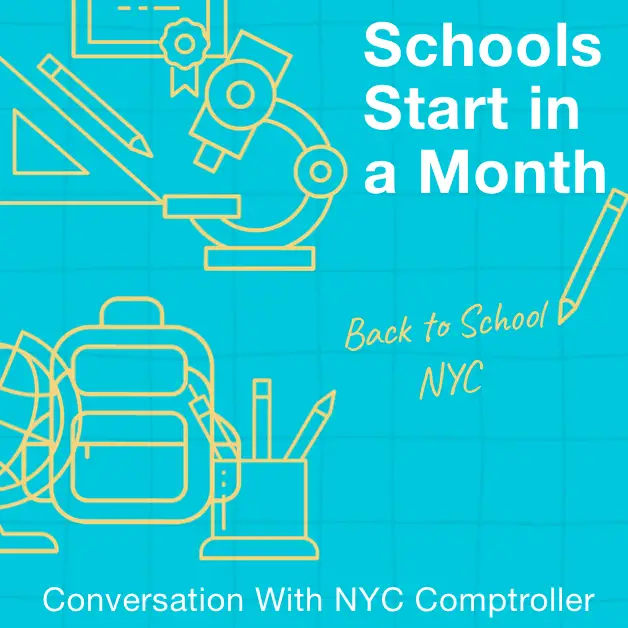
I tuned in to a Zoom call – “Schools Start in a Month: A Conversation with NYC Parent and Comptroller Scott M. Stringer” earlier today.
Since Comptroller Scott Stringer is also a parent with kids in NYC public schools, it was interesting to hear his perspective on reopening schools and online learning. Dr. Tom Liam Lynch, the editor in chief of InsideSchools and education policy director at The Center for New York City Affairs was the other person in the conversation.
Key Takeaways:
There are a range of family experiences which shape what families and schools need most this fall.
I agree. As I have mentioned before, the full-time remote learning option is what my family has chosen to start off the 2020/2021 school year. I am well aware that having the choice to make this decision is a privilege. (I work from home. My family has good WiFi. Each family member has their own computer. My kids adjusted to remote learning relatively well. Etc.)
There are parents who have a different reality though. Lunches, social services, and special needs services are necessary for many families. (I don’t even know how families are going to handle hybrid-remote schooling. Are businesses really going to give their employees the flexible schedules needed to make the hybrid model work?)
Remote learning is going to be different from the crisis schooling earlier this year.
My husband (a math teacher) and I have discussed this. It’s one thing to do remote learning when the teachers are already familiar with the students. It’s an entirely different thing to start off the year remotely. There are many unanswered questions – including will the remote teachers be consistent?
There are technology considerations.
There was a big thing with switching from Zoom to Google Classrooms in the spring due to safety reasons. Where do the schools now stand? Also, if a student’s laptop breaks, how will the schools get new ones to kids in a timely manner so that they don’t miss classes?
There are safety considerations.
According to Mr. Stringer, outside learning should be more heavily considered. In theory, using schoolyards, parks and the like could accommodate 75% of students.
While 100% remote might be the safest option, it is not realistic for all parents. Parents of essential workers and other parents who need help must be considered.
Ultimately, it was agreed that schools need to be re-imagined in safe ways in order to meet the goal of fairness and equal education. While there are still many unanswered questions regarding the upcoming school year, parents and teachers must work together with the administrators. (Final tip: Reach out to your kids’ school principals in case you are not clear about their plans.)
{Updated on 4/12: You can see a video of the webinar below.}